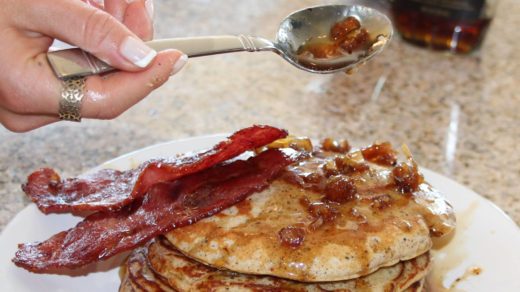Nitroglycerin and its derivatives have been around for a long time. The identification of nitrate tolerance goes back even prior to 1900. In this post, I’ll discuss the major strategy for nitrate tolerance prevention and some of the issues that may be encountered when using isosorbide mononitrate and transdermal nitroglycerin for angina prevention.
There are numerous theories as to why nitrate tolerance develops but the clinical consequences are such that patients need to have a nitrate-free period or the drug essentially loses efficacy. When thinking about this problem, an obvious question has always been, “Can’t we just give more?” Not really without putting patients at extreme risk. “In 1888, Stewart reported a case of nitroglycerin tolerance in a man who required 20 grains of pure nitroglycerin to achieve the same hypotensive effect as induced by the initial dose of 1/100 grain.” I think this demonstrates that tolerance cannot be overcome by increasing the dose as you would be putting patients at insane risks by using VERY high doses.
To prevent nitrate tolerance, the current consensus is the nitrate-free period. This leads to more questions. How long do we have to wait? Will they have rebound symptoms if we wait too long? Will nitrates have no effect if the patient needs to take it earlier? Are there pharmacogenomic/kinetic differences between patients that cause variability as to how long that nitrate period should be?
Nitrate Tolerance Prevention – What should be done in practice?
Watch for rebound symptoms (angina) prior to the next dose. This may be indicative that the nitrate-free period is too long. The usual nitrate-free period target is anywhere between 8-12 hours (classic board/pharmacology exam question!). Early monitoring when first initiating a long-acting nitrate is important to assess if we are giving it too frequently (causing tolerance) or potentially waiting too long to give it and increasing the risk of rebound symptoms.
Another important consideration is to understand the kinetics of the dosage form (patch, ER, IR, etc.) you are using. The importance of pharmacokinetics and understanding half-life and drug concentrations is critical. The half-life of isosorbide mononitrate (Imdur) is around 5-6 hours with the duration of action of the extended-release product in the range of 12-24 hours. This is a pretty big range that is reported so close patient monitoring is important when first initiating this medication. Imdur was developed to be dosed once daily but may not work perfectly for everyone.
The nitroglycerin patch is going to typically stay on for 12-14 hours in most patients. Removing the patch is necessary for nitrate tolerance prevention. This is different from some of the other patches so make sure patients are adequately educated on this point. This is another situation where it would be ideal to monitor patients closely upon initiation and work with them to get the appropriate interval for patch placement and removal based upon their schedule.
Lastly, adjusting the dose upward may help reduce the potential for rebound angina symptoms but at the cost of increasing the chance for side effects and tolerance. Reducing the dose may help reduce the chance of tolerance as drug concentrations should be (slightly) lower than if a higher dose was used.
How often do you see long-acting nitrates used in your practice? Are there any other strategies for nitrate tolerance prevention you’ve seen employed?
Did you enjoy this blog post? Subscribers are emailed new blog posts TWICE per week! In addition, you’ll get access to the free giveaways below. Over 6,000 healthcare professionals have subscribed for our FREE Giveaways. Why haven’t you?!


